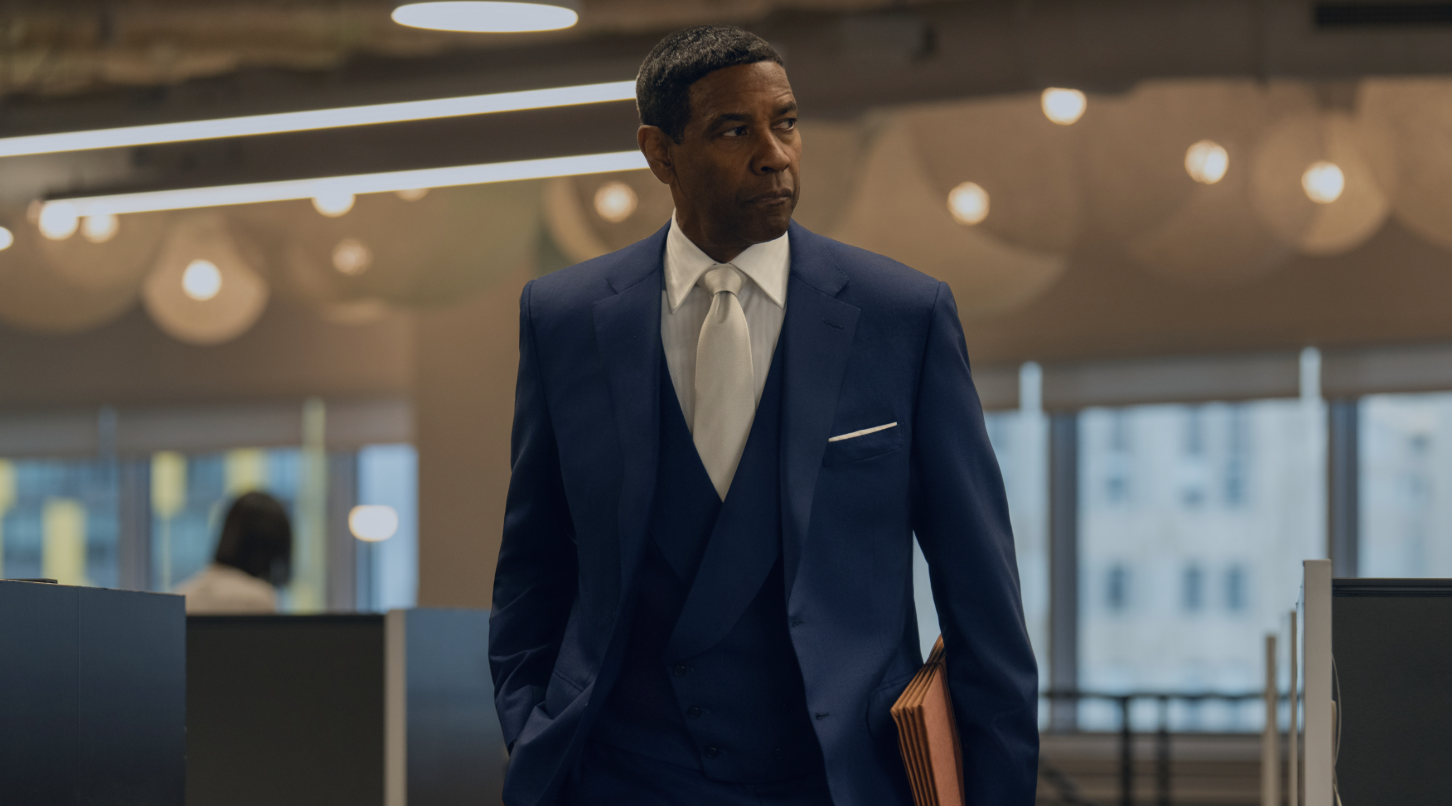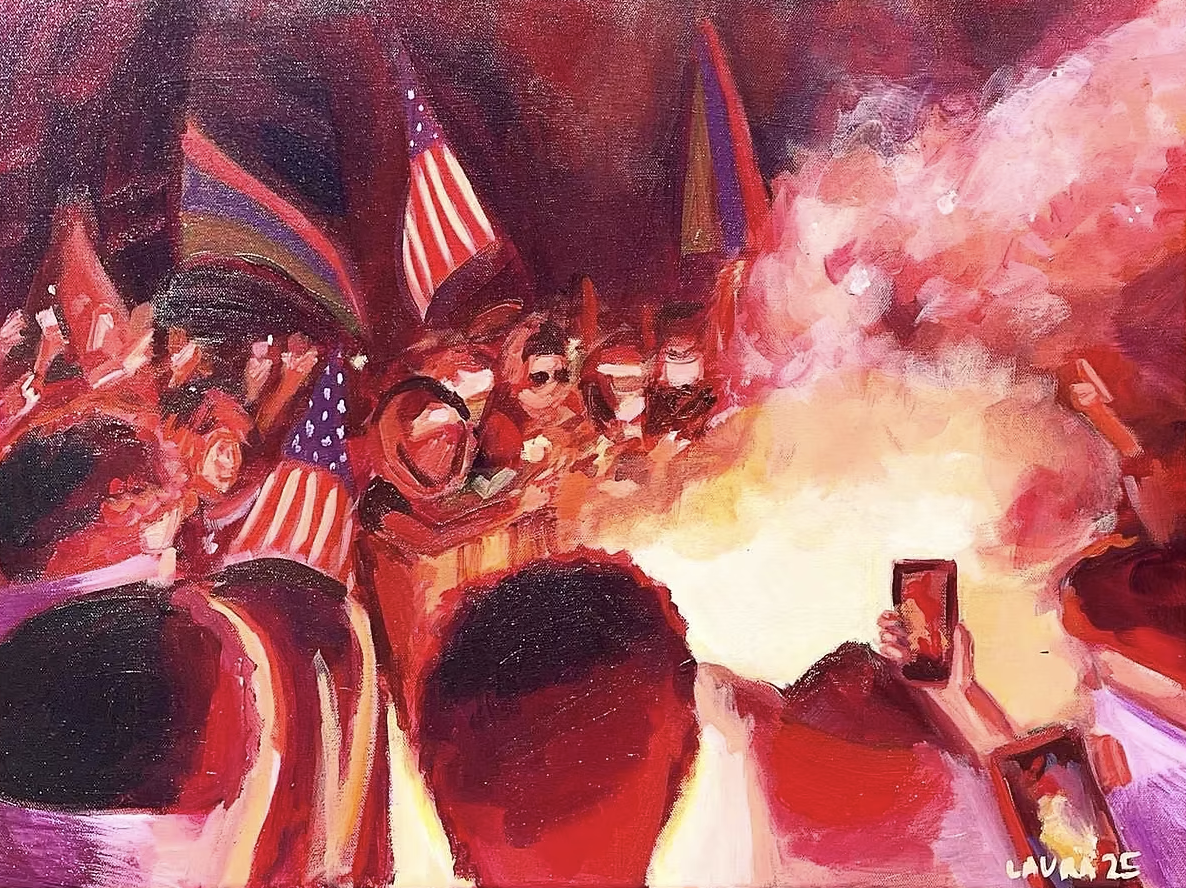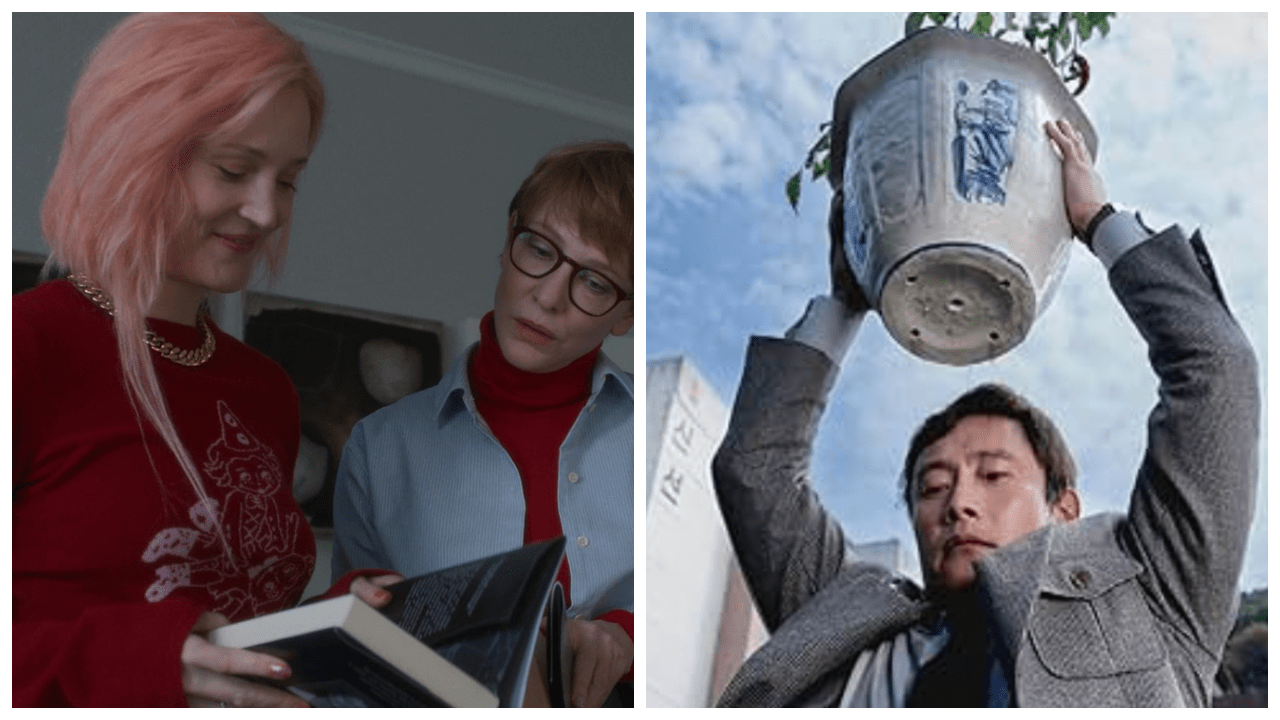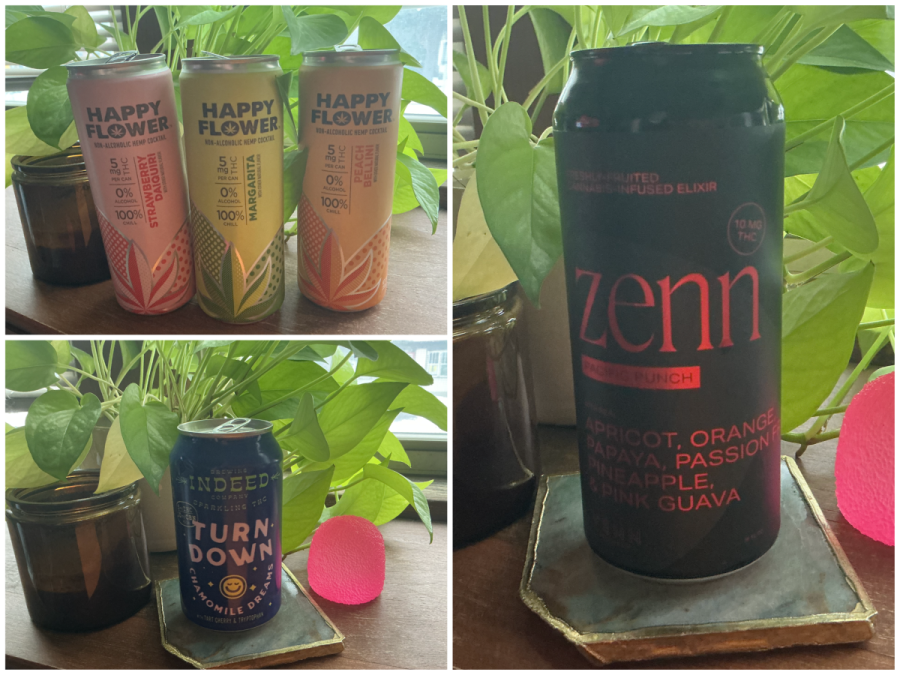During the most thrilling set piece in Spike Lee’s latest film, Highest 2 Lowest, Denzel Washington’s record biz titan David King rides a 4 train uptown, tightly clutching a briefcase containing the ransom to save a kidnapped teen. The soundtrack is Eddie Palmieri’s smoking salsa, coming to you live from the Puerto Rican Day Parade, punctuated by a full subway car chanting “Let’s go! Yan-kees!” As the energy of the city pulses onscreen, the camera veers dramatically to zoom in on… an Aaron Judge poster.
I’m not sure I’ve ever seen a director as easily distracted by his surroundings as Lee is throughout his remake of Akira Kurosawa’s High and Low from 1963. (Both films are based on the 1959 Ed McBain novel King's Ransom.) You sense that the director would rather follow the Sox-hating mob into Yankee Stadium or chill with Rosie Perez on Fifth Avenue than plod along after the crime-drama plot he’s inherited. (While Alan Fox wrote the original script, Lee’s fingerprints are all over this one, so I’m giving him auteurist credit for whatever happens here.) I mean, this is a movie where Rod Strickland (as himself) has as much camera time as Wendell Pierce.
And yet, Lee remains the kind of director you intend to write off in a 200-word blurb and instead wind up puzzling over at length. I expected Highest 2 Lowest to disappoint—High and Low (which you can and should catch at the Main this weekend) is possibly the most thrillingly directed crime drama of all time, and Lee’s track record with remakes (Oldboy, Da Sweet Blood of Jesus) is abysmal.
But I also expected moments of brilliance scattered amid chaotic nonsense. Lee’s genius lies in his willingness to flaunt imperfection, didacticism, his own obsessions. From the moment we traverse the Manhattan skyline and Gordon MacRae belts “Oh, What a Beautiful Morning” over the credits, Highest 2 Lowest announces itself as a New York movie, and its finest moments are when that seems to be enough for Lee. Elsewhere he settles into dogged profesh mode; weirdly, the film is most flawed when Lee is paying most attention to its plot.
Just goes to show you that Spike Lee is a guy who, at 68 and nearly four decades into his career, can still discover surprising ways to disappoint and perplex.
In High and Low, Kurosawa’s great collaborator Toshiro Mifune, a grand old man at all of 43, is Kingo Gondo, a wealthy shoe designer. While brashly attempting to take over his company, Gondo over-leverages himself and risks all his assets. For the first hour of the film, we’re trapped inside Gondo’s home with him, as well as his family and the police. Kurosawa arranges humans like a pool shark does balls, scattering them around the room exactly where he wants them with each break.
For its first third, Highest 2 Lowest is almost comically devoid of tension, as the camera luxuriates in the buppie opulence of King’s DUMBO penthouse. The posh crib is stuffed to bursting with artifacts of racial pride—not only is there a Basquiat in David's office, but teenage son Trey (Aubrey Joseph) has a Kamala poster in his room. We learn that Trey is well- and firmly parented and that King’s wife Pamela (Ilfenesh Hadera) is a trusted partner (though Hadera is given little to do and accomplishes less).
Like Gondo, King is in over his head financially. A record exec with “the best ears in the business,” he’s fighting to regain his label, Stackin’ Hits, and he’s energized almost manically by the financial maneuvering. Yet when David learns that his son has been snatched by a kidnapper demanding a $17.5 million ransom, Washington responds with as much emotion as if he’d just found a parking ticket on his windshield. The movie is like, "Ugh! Plot again?"
Highest 2 Lowest was clearly conceived as a showpiece for Washington, the lion in winter (can he really be 70 already?), and he stalks across each scene with undimmed charisma and assurance. Yet it’s a commanding performance in a film that requires a nuanced one. We don’t see King crack or falter; his existential worries feel scripted. (Also, I’m stumped while trying to place him in urban music history: Is he a Russell Simmons? An L.A. Reid? Surely not a Sean Combs or any more streetwise mogul.)
When it turns out that the kidnapper did not grab Trey but accidentally made off with the son of King’s reformed ex-con pal and chauffeur, Paul, the millionaire breathes a sigh of relief. The kidnapper still demands a fortune, but that’s no longer his concern. It’s here that a perfectly simmering Jeffrey Wright rises to the occasion; he’s got one foot in cellblock Islam and another in the hood and he guilts King into paying the ransom anyway.
Highest 2 Lowest comes alive here as we witness the intersection of class and race. The cops, deferential to King, treat Paul as they would any Black man. (Side note: It is very distracting, and not in a good way, to cast 30 Rock’s Dennis Duffy as a surly cop here.) It's among the few moments where Lee, who clearly identifies with top dog King, allows us to see from the perspective of another character.
And this could have been the moral dilemma at the center of a great film: What responsibilities do the highest successful Black entrepreneurs have to their lowest and least fortunate racial counterparts? That question could grow more pressing and broaden to take in the younger generation as a whole once the kidnapper turns out to be a hungry rap upstart Yung Felon (A$AP Rocky). But instead Lee has scores to settle.
In both High and Low and Highest 2 Lowest, the kidnapper disappears with the money. This is where Kurosawa’s film all but abandons Mifune’s Gondo, shifting gears drastically to become a police procedural. We’ve been set up emotionally—we expected a film about saving a child, but instead we see the vast forces put to work to regain the property of the wealthy.
Lee dives more conventionally into action mode; Washington and Wright, their past grievances set aside, strap up and prepare to hunt down the kidnapper, buddy cop style. After very little effort, King uncovers Yung Felon (Law & Order-ass name) and faces off with him in a confrontation that becomes a proxy for Lee to express his incomprehension of anyone born after Walt Frazier retired. You’ve got to wonder: Lee is so baffled by A$AP Rocky, what would the guy possibly make of Playboi Carti or Juice WRLD?
Because he was a brash, young, self-promoting Black artist who rose to acclaim just as hip-hop was entering its golden age, it’s easy to forget that Spike Lee has never totally gotten rap. True, he did get Public Enemy, but so did lots of baby boomer critics (often white), many of whom would be griping that hip-hop had lost all merit by 1993.
The New Yorker’s Richard Brody considers the aesthetic conservatism of Highest 2 Lowest a “plot twist” in Lee’s career, but Spike has been a Black classicist all along. Both he and Washington are old-school race men. (Washington and his sons have been dutifully committing August Wilson plays to film for the past decade.) And as early as Bamboozled in 2000 and as recently as Chiraq in 2015, Lee leveled accusations of exploiting Black stereotypes and exacerbating gun violence in the Black community at hip-hop.
Rappers and their fans, inured to such criticisms, usually coming from reactionary white concern trolls, have often shrugged off complaints from older Black boomers like Lee as mere incidents of respectability politics, maybe a bit too quickly. But Yung Felon doesn’t even muster that much of a defense. Lee has often employed a weighted dialectic in his films, allowing us to hear multiple viewpoints but putting his thumb on the scale. But here there’s not even any token counterbalance—Yung Felon is a pure product of the boomer imagination.
Bamboozled was fascinated by the legacy of minstrelsy; Chiraq, while seemingly clueless about the real Chicago, created a film world that felt alive on its own fantastical terms. But here, Lee has no interest in Yung Felon’s life and surroundings; at home with the highest, he avoids the lowest. There’s nothing as harrowing as the kidnapper’s trip to Dope Alley in High and Low, where junkies stagger around him like zombies (Worth noting that the Kurosawa film’s literal Japanese title is Heaven and Hell.)
By the end of High and Low, Gondo’s story has all but been eclipsed by the police manhunt. Though he regains his cash, he’s humbled and indebted, starting over at a new company as creditors claim his furniture. When he confronts the kidnapper (a demonically captivating Tsutomu Yamazaki) he learns nothing. We’re left with the sight of a shaking, defiant nihilist, envious of Gondo’s wealth, an emblem of the inequality and turmoil of postwar Japan, hauled off by guards. It’s a more striking illustration of the collapse of shared meaning than the climax of Rashomon.
But Lee and Washington have too much pride to end their film that way. When David confronts an imprisoned Yung Felon, the inmate is content that his songs are blowing up online. Prison will make him a star, and he suggests that King sign him to a deal. The rapper's delight in his own virality reminds us of a clash earlier in the film between David and Trey about how refusing to pay the ransom will play out on social media. This is a film that happily flaunts its ignorance of how the world has changed for younger people. In the world of Highest 2 Lowest, “put that phone away” is the new "pull up your pants."
Anyway, King is memed as a hero in the Post. What ultimately matters about Highest 2 Lowest to Lee that the old heads emerge victorious. In the final scene, King (his penthouse apparently non-foreclosed) sits appreciatively through a full performance of a wretched, oversung Grammy-bait ballad by the woman who will be his new star. (Maybe he’s Clive Davis after all.) Yes, it’s Trey who brings that singer to King’s attention, but that just shows how well his son has learned from the master. To paraphrase Fitzgerald, the rich aren’t like you and me—they have better dads.
Yet Lee refuses to slap you in the face with his assumptions; far from a late career conversion to subtlety, it makes it feel like his heart just isn't in this story. Me, I can imagine a version of Highest 2 Lowest where Spike really gets his Dziga Vertov on, his camera floating through the city, checking in periodically on the action while mostly eavesdropping on bodega arguments about the Knicks, following dog walks through Central Park, and maybe even encountering some of the down-and-out that Highest 2 Lowest brushes past and hearing what they say about themselves.
GRADE: B
Highest 2 Lowest is now showing in area theaters.
High to Low is screening at the Main Cinema through next Thursday. Check here for showtimes.






